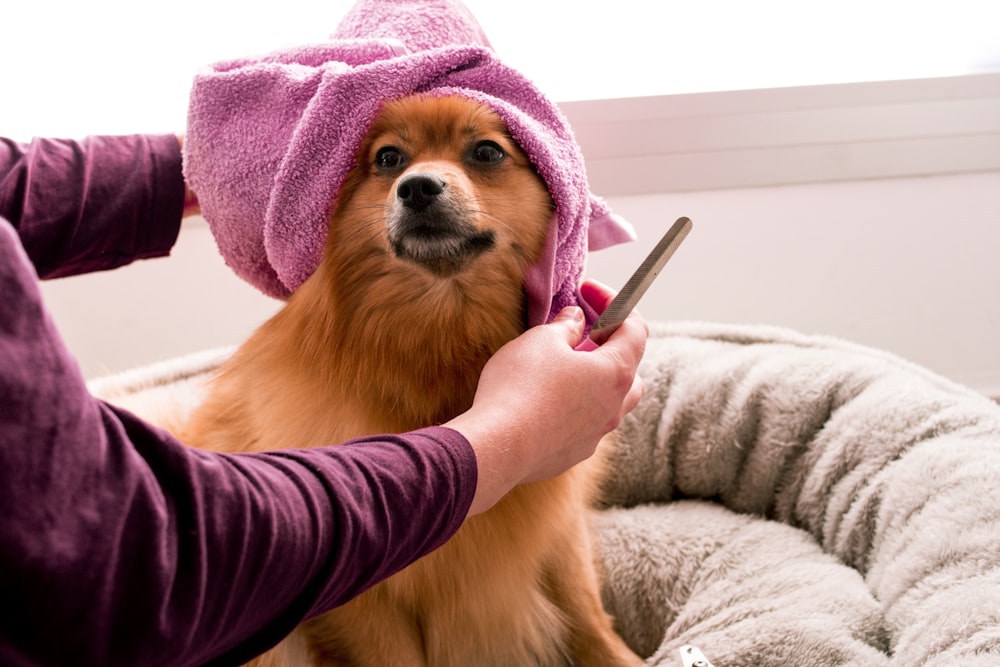Winter Pet Care Keeping Your Furry Friends Warm and Safe
Introduction
As the winter chill sets in, it’s essential to ensure that our furry companions stay warm and safe during the colder months. From protecting them from frostbite to providing cozy shelter, here are some essential tips for winter pet care.
Creating a Warm Environment
One of the most crucial aspects of winter pet care is providing a warm and comfortable environment for your furry friends. Ensure that they have a cozy bed or blanket to snuggle up in, away from drafts and cold floors. If your pet spends a lot of time outdoors, consider providing a heated shelter or bringing them indoors during the coldest parts of the day.
Protecting Against Frostbite and Hypothermia
Just like humans, pets are susceptible to frostbite and hypothermia in cold weather. Keep an eye on your pet’s ears, tail, and paws for signs of frostbite, such as pale or discolored skin. To prevent hypothermia, limit your pet’s time outdoors in freezing temperatures and consider dressing them in a pet-safe sweater or coat for added warmth.
Proper Nutrition
During the winter months, pets may need extra calories to maintain their body temperature. Talk to your veterinarian about adjusting your pet’s diet to ensure they’re getting enough nutrients to stay healthy and warm. Additionally, make sure your pet has access to fresh, unfrozen water at all times, as dehydration can be a concern in cold weather.
Limit Outdoor Time
While some pets may enjoy playing in the snow, it’s essential to limit their time outdoors in extreme cold. Shorten walks and outdoor activities during the coldest parts of the day, and always keep an eye on your pet for signs of discomfort or distress. If it’s too cold for you, it’s probably too cold for your pet as well.
Protect Their Paws
Salt and de-icing chemicals used on sidewalks and roads can be harmful to your pet’s paws. Consider using pet-safe ice melts on your own property and wiping your pet’s paws with a damp cloth after walks to remove any residue. You can also protect their paws by using pet booties or paw wax to create a barrier between their feet and the cold ground.
Grooming and Coat Care
Regular grooming is essential for your pet’s skin and coat health during the winter months. Keep their fur clean and free of mats, which can trap moisture and lead to skin irritation. Brushing your pet regularly can also help stimulate blood flow and distribute natural oils, keeping their coat healthy and shiny.
Provide Plenty of Exercise and Mental Stimulation
While it may be tempting to hibernate indoors during the winter, pets still need regular exercise and mental stimulation to stay healthy and happy. Find indoor activities and games to keep your pet active and engaged, such as puzzle toys, indoor fetch, or training sessions. Just be sure to adjust their exercise routine to account for the colder weather.
Keep Them Visible
With shorter days and longer nights, it’s essential to keep your pet visible during walks and outdoor activities. Invest in a reflective collar or leash and consider adding reflective strips to your pet’s coat or clothing. This will help ensure that drivers and other pedestrians can see your pet, reducing the risk of accidents.
Stay Alert for Signs of Seasonal Hazards
Winter brings its own set of seasonal hazards for pets, including antifreeze poisoning, ice, and snow ingestion, and holiday decorations. Keep an eye out for potential dangers in your home and neighborhood, and take steps to prevent accidents and injuries. If you suspect your pet has ingested something harmful, contact your veterinarian immediately.
Conclusion
By following these essential tips for winter pet care, you can ensure that your furry friends stay warm, safe, and healthy throughout the colder months. With a little extra care and attention, you and your pet can enjoy all that winter has to offer while staying cozy and comfortable indoors and out. Read more about pet care in winter







 – Heart rate: 60-90 BPM, found by listening (ausculting) with stethoscope at fleece-free area under elbow. Heart rates can be increased due to exercise/exertion/excitement, stress, fever, or pain. Arrhythmias are common in SAC’s-generally no big deal.
– Heart rate: 60-90 BPM, found by listening (ausculting) with stethoscope at fleece-free area under elbow. Heart rates can be increased due to exercise/exertion/excitement, stress, fever, or pain. Arrhythmias are common in SAC’s-generally no big deal..jpg) Though the question, “Where do turtles live?” may seem simple, the answer is quite broad. Turtles live just about everywhere. Depending upon their species, turtles can be found living in a number of habitats.
Though the question, “Where do turtles live?” may seem simple, the answer is quite broad. Turtles live just about everywhere. Depending upon their species, turtles can be found living in a number of habitats. There are many parasites that can give cats problems. Feline tapeworms are some of the most common. These white worms are capable of growing approximately eight inches long if they live long enough. Thanks to the suckers and hooks that Mother Nature equipped them with, they’re capable of attaching themselves to the walls of the small intestine of your cat.
There are many parasites that can give cats problems. Feline tapeworms are some of the most common. These white worms are capable of growing approximately eight inches long if they live long enough. Thanks to the suckers and hooks that Mother Nature equipped them with, they’re capable of attaching themselves to the walls of the small intestine of your cat.  It can be stressful and time intensive looking for ways on how to get cat urine smell out of carpet. The odor in some homes I’ve been in have literally brought tears to my eyes! Not to mention leaving an ugly stain.
It can be stressful and time intensive looking for ways on how to get cat urine smell out of carpet. The odor in some homes I’ve been in have literally brought tears to my eyes! Not to mention leaving an ugly stain.  Dog mange is a condition caused by the Demodex mite that causes irritation to the skin and hair loss. Most cases of mange appear in young dogs. Demodectic mange or Demodicosis is caused by the Demodex mite. The mite can be found in hair follicles. The Demodex mite, in small numbers is normal to be present on the skin of pet. Only when the mite begins to reproduce rapidly it causes the demodectic mange disease also called mange.
Dog mange is a condition caused by the Demodex mite that causes irritation to the skin and hair loss. Most cases of mange appear in young dogs. Demodectic mange or Demodicosis is caused by the Demodex mite. The mite can be found in hair follicles. The Demodex mite, in small numbers is normal to be present on the skin of pet. Only when the mite begins to reproduce rapidly it causes the demodectic mange disease also called mange. When you tell someone your contemplating obtaining a rat for your family generally folks’s first reaction is this weird look on their face and they say “Yuck! Why?” “Their tales are scary looking!” They are frequently linked with scary and filthy things.
When you tell someone your contemplating obtaining a rat for your family generally folks’s first reaction is this weird look on their face and they say “Yuck! Why?” “Their tales are scary looking!” They are frequently linked with scary and filthy things.